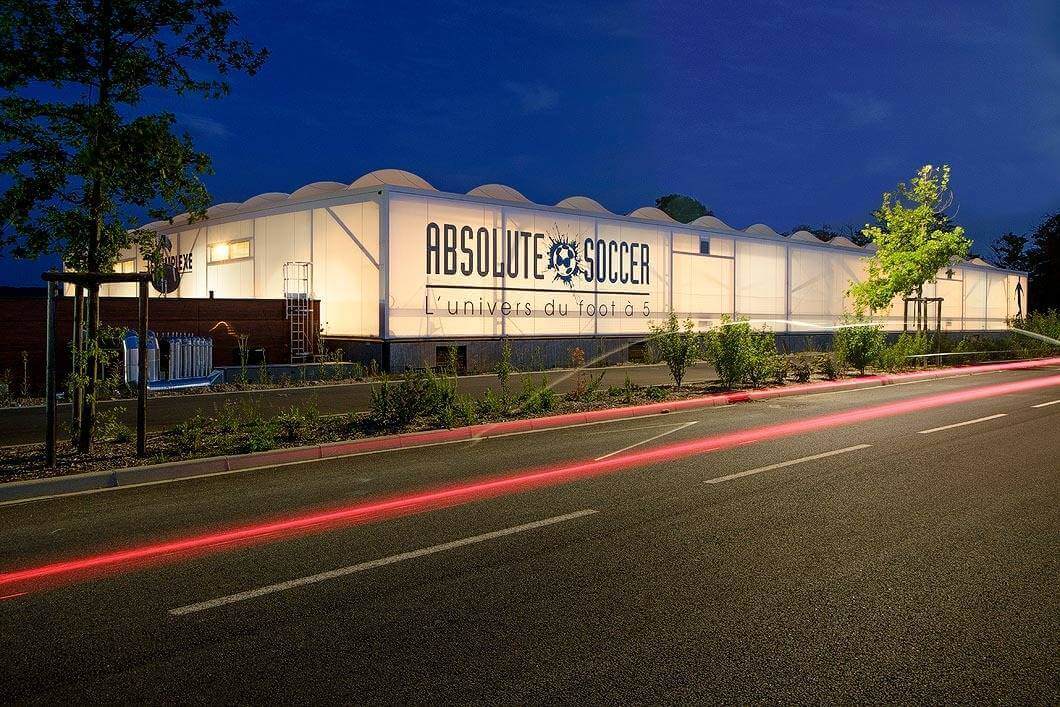Manosque, a french town that has undergone major demographic and economic development in recent years, inaugurated its first indoor football complex in spring 2014. In charge of its design and construction, SMC2 chose textile architecture for its many qualities in terms of solidity, durability and comfort. This indoor complex has thus become the first complex with a textile roof in France.
A first in France
As the most populated town in the Alpes-de-Haute-Provence, Manosque needed a structure that would allow the many football enthusiasts in the region to play their favourite sport in the best possible conditions, whatever the season.
The Manosque indoor football complex will celebrate its first anniversary on 27 May. Equipped with 4 5-a-side football pitches, 3 padel courts, a restaurant, a lounge bar and a business area, it is the first building of its kind to be designed with a textile covering in France.
The choice of textile
Innovative, textile architecture offers many advantages that are all the more appreciable under the sun of Manosque. Indeed, located in the Provence-Alpes-Côte d’Azur region, the town enjoys strong sunshine and higher than average temperatures throughout the year. As practising sport can be difficult in very hot weather, the sports complex had to offer ideal conditions for practising while being environmentally friendly (and therefore energy efficient).
The assurance of a comfortable playing environment
Composite membrane is a material that is used in the construction of the world’s largest sports complexes such as the Olympic stadiums in London and Berlin. It offers great comfort for players and spectators while being environmentally friendly and more economical than traditional materials.
Its low thermal inertia allows sports to be played in good conditions despite the high temperatures that can prevail outside. Its natural lighting offers a homogeneous luminosity without shadow zones or glare.
As matches and the public can be noisy, the textile architecture offers a high level of acoustic comfort by curbing the phenomena of echo and reverberation.
Eco-responsibility
100% recyclable, the thermal and luminous performances of the textile material allow precious energy savings in heating/air conditioning and lighting.






![[TESTIMONIAL] SAMUEL GAUTIER, ARCHITECT, ATELIER EPICEA](https://www.smc2-construction.us/wp-content/uploads/2021/10/facade_web.jpg)